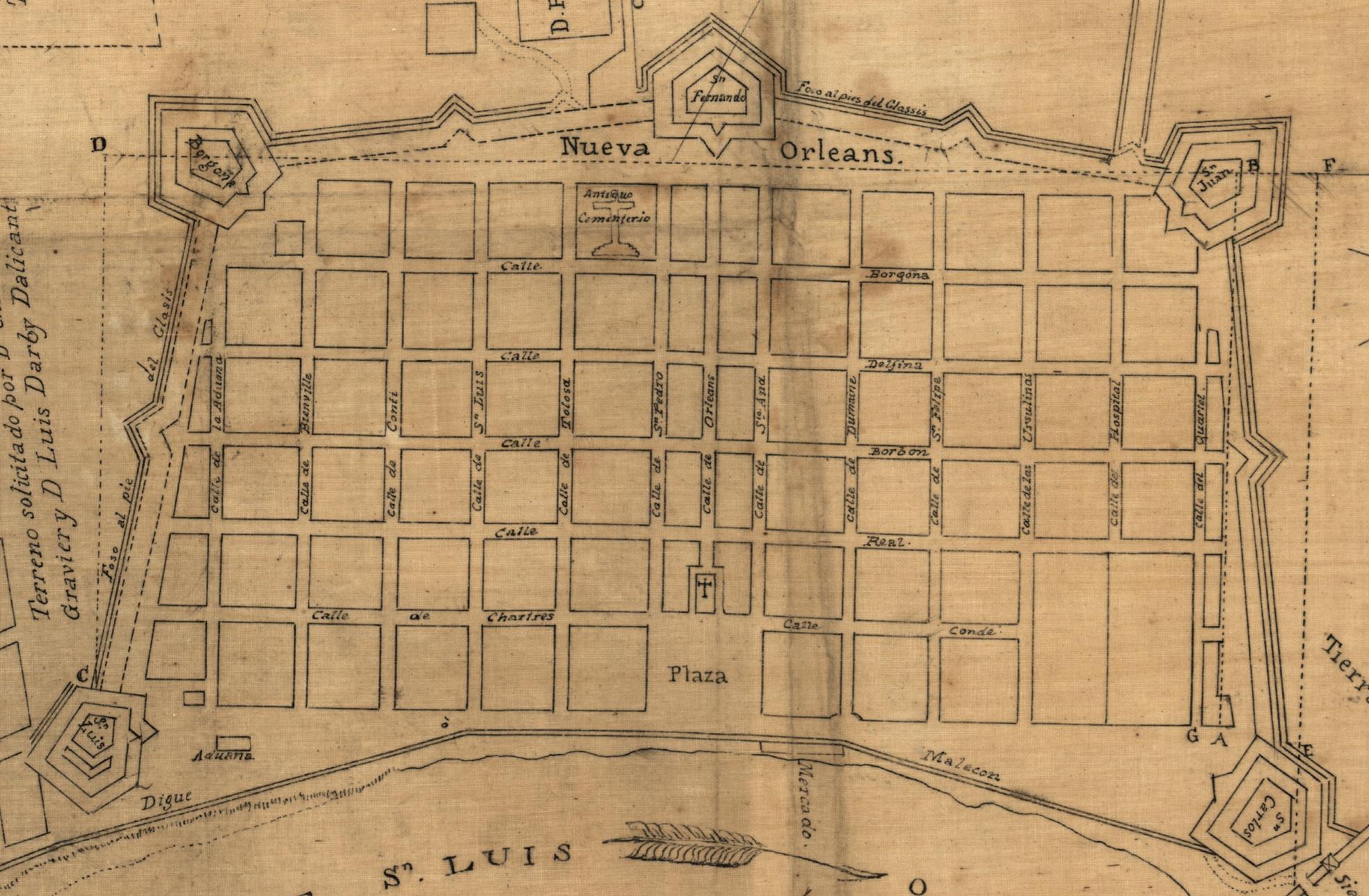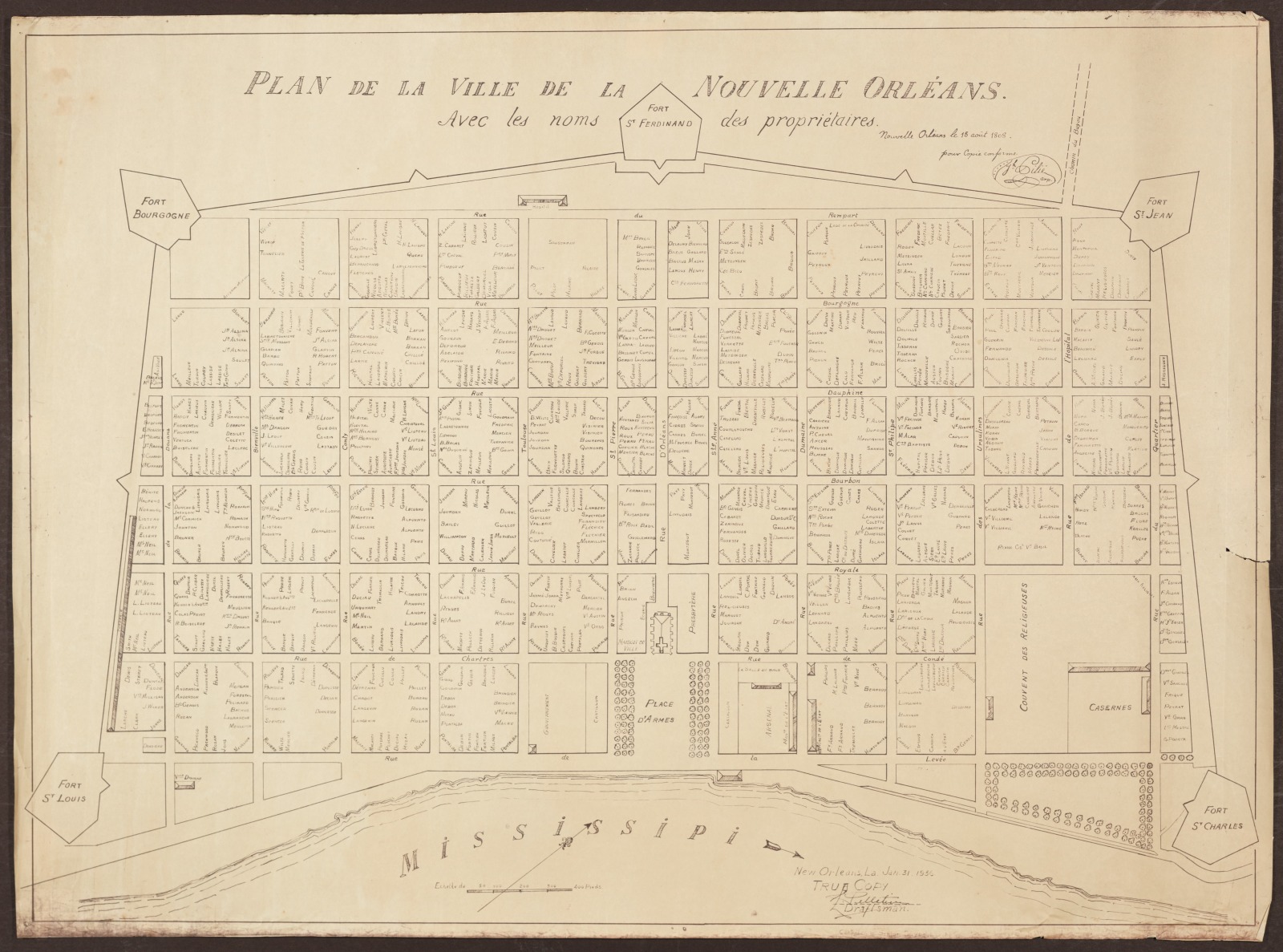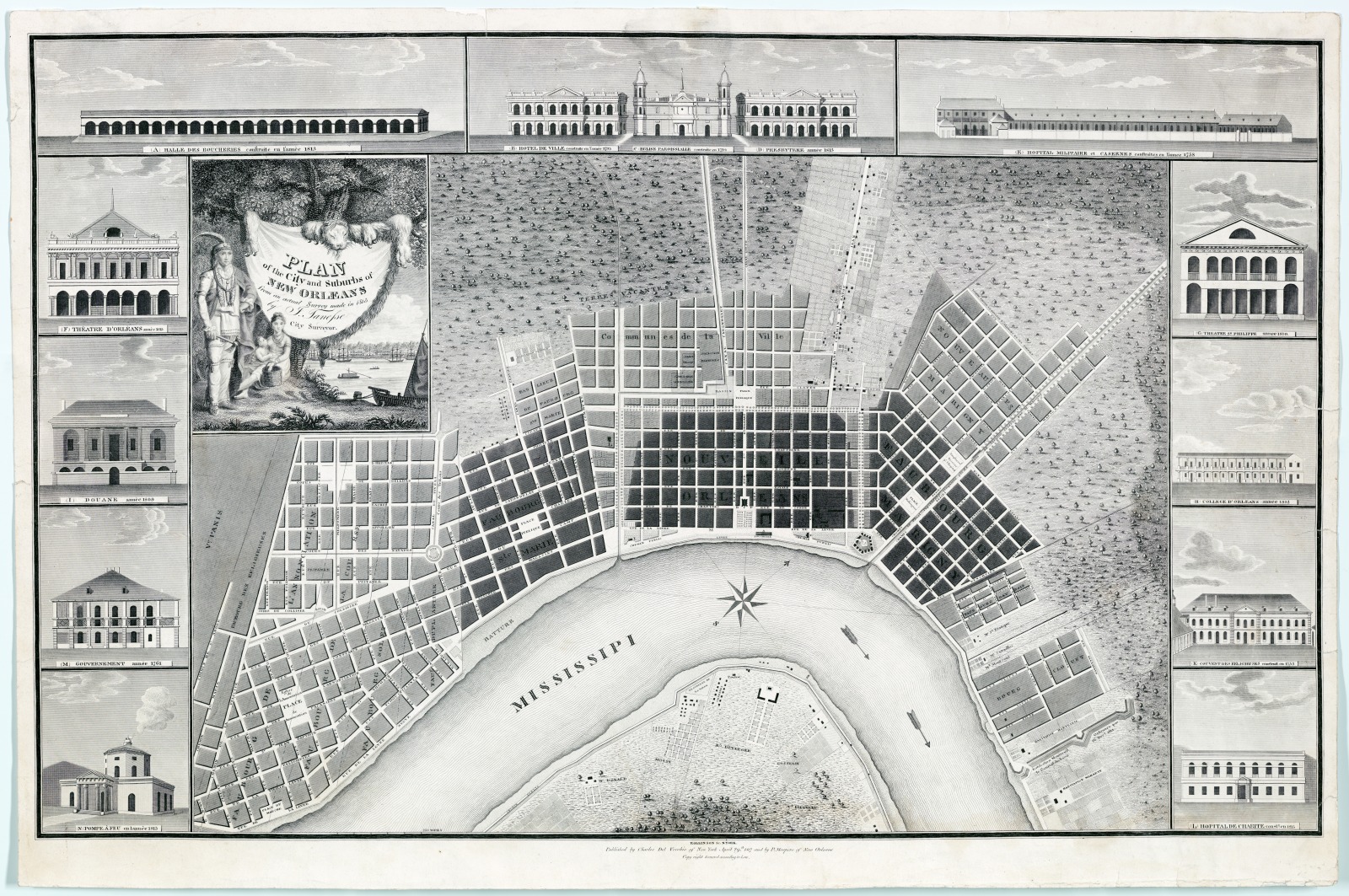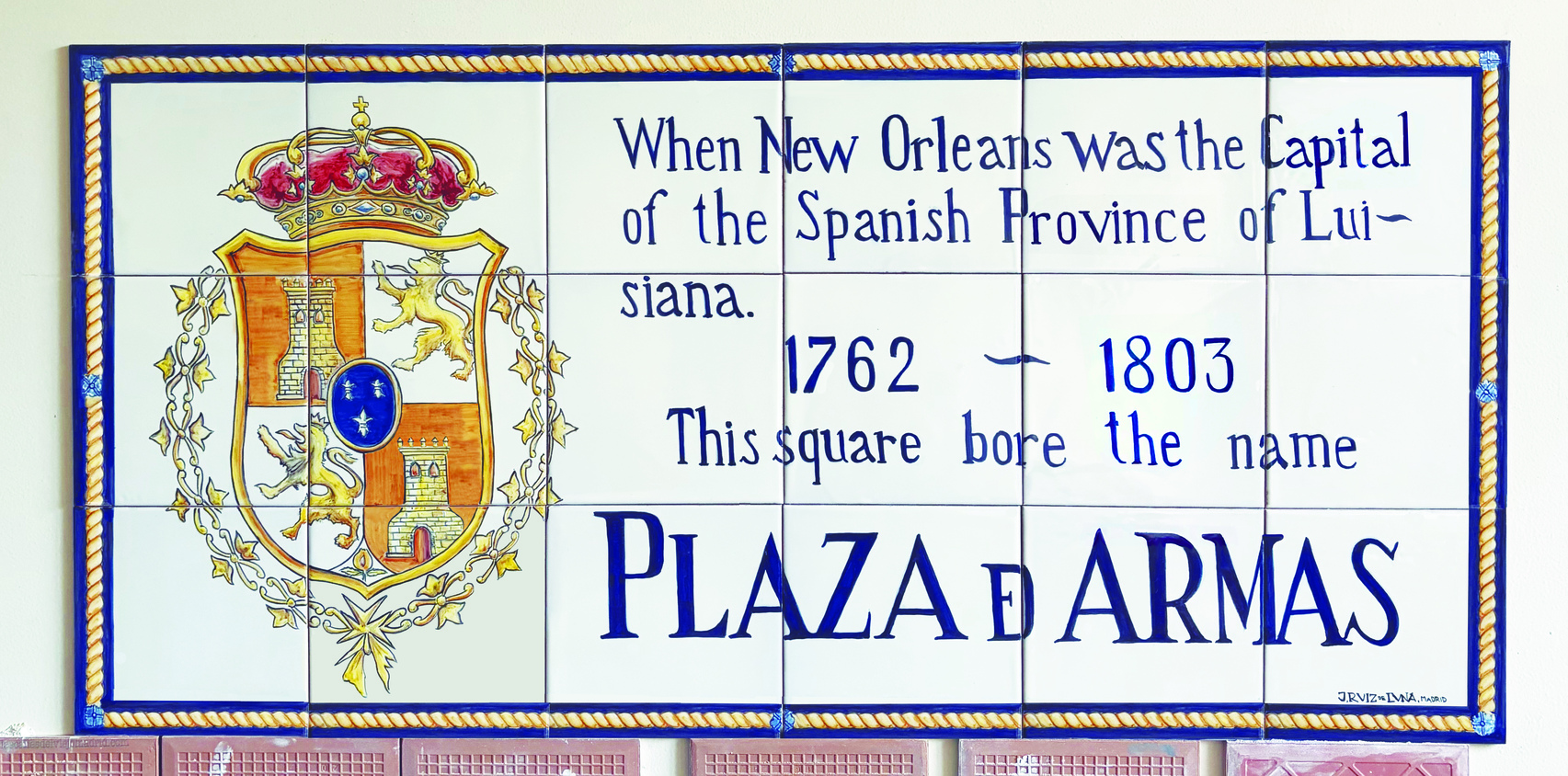In the heart of New Orleans’ French Quarter, a unique piece of history adorns the walls of buildings - ceramic street signs that tell a story of cultural exchange and artistic craftsmanship. These signs, gifted by Spain in the late 1950s, commemorate the 200th anniversary of the Spanish acquisition of the Louisiana Territory. As we approach the 250th anniversary of the Declaration of Independence, there’s renewed interest in preserving and restoring these distinctive markers of New Orleans’ rich history.
The Ruiz de Luna Legacy
The story of these signs is intertwined with the legacy of the Ruiz de Luna family, renowned Spanish ceramicists. A dear friend of mine, Juan Ruiz de Luna Jr., comes from this long line of ceramicists, most notably his great grandfather, the late prolific Spanish ceramicist, Juan Ruiz de Luna. It was their family’s workshop in Talavera de la Reina, Spain that created these remarkable signs.
In the late 1950s, Spain gifted the City of New Orleans these Spanish ceramic street signs to commemorate the 200th anniversary (1962) of the Spanish acquisition of the Louisiana Territory. The tiles were delivered in 1959 and 1960 by the Spanish ambassador to the United States, José María de Areilza 1.
My involvement in this project stems from this personal connection. Juan Jr., aware of the signs’ deterioration, reached out to me, hoping to continue his family’s legacy by replacing the aging signs. This sparked a year-long journey of calling different city offices, but eventually found the right office to work with, the Vieux Carre Commission.
Thanks to Dr. Renee Bourgogne of the Vieux Carre Commission, I was eventually put into contact with the Honorary Consul of Spain in Louisiana. They expressed interest in replacing and repairing the signs in time for the Declaration of Independence’s semiquincentennial (250th) anniversary.
The Bowen Survey of April 2024
To kickstart the process of replacing and repairing the signs, both the Honorary Consul of Spain in Louisiana and I conducted our own individual surveys. I’m calling mine the Bowen Survey of April 2024, catalogued the existing signs, their conditions, and locations throughout the French Quarter.
Note: the placement of signs with the markers on the map are a best effort and may not reflect the precise location.
A Bounty for History Enthusiasts
For those intrigued by this slice of New Orleans history, there’s an opportunity to contribute. A $50 USD bounty is available for anyone who can:
- Identify a sign that exists in the French Quarter not listed in the survey above, or
- Share details about a Spanish ceramic street sign that no longer exists today but did at one point in the past (excluding the Plaza d’Armas sign that should be in Jackson Square).
The bounty is available in perpetuity, but can only be claimed once. If you find one, you’ll receive $50 USD, with thanks for any additional findings. To claim the bounty, contact me on BlueSky.
I have a vague recollection of one sign having painted-on cracks to emulate an aged sign with a fake Ruiz de Luna signature. I’d be thrilled if anyone finds it and would be happy to add it to the survey.
Quirks and Curiosities of the Street Signs
During the survey, several interesting quirks came to light, highlighting the complex history of these signs:
-
The original tiles are supposed to be square, measuring 150mm (about 5.9 inches). However, the Avda D’ La Explanada (Esplanade Avenue) street sign’s middle row of tiles are 6 inches square. This suggests that at some point in the past, the middle row of tiles were replaced.
-
The Calle Real sign at the Omni Royal Hotel appears to be a complete replacement. The tiles are noticeably thicker than the Spanish tiles, and the Ruiz de Luna name is absent.
-
The Calle del Cuartel signs present a puzzle. Each sign’s bottom right 4 tiles all have an extra shiny polish relative to the rest of the sign. They seem to have authentic Ruiz de Luna signatures.
-
Similarly, each of the Calle del Arsenal y de las Ursulinas sign’s bottom right four tiles show a deterioration of the Talavera blue ink.
-
The Plaza d’Armas sign has its own story. The original sign from the Ruiz de Luna workshop was in terrible condition circa 2011. It was replaced in April 2013, donated by the Plus Ultra Seguros insurance company. However, during our survey, the sign was either not on display or has since been destroyed and not replaced.
The History of Spanish Ceramic Street Signs in the French Quarter
The street signs were intended to depict the names of the streets during the time of the Spanish Territory. But do they truly reflect historical accuracy? Did these streets exist at the time of the Spanish Territory of Louisiana?
To answer these questions, we need to examine historical maps. Let’s start with the Pintado-Trudeau map 2 drafted in 1804, reflecting information about the city in 1795-96:

Credit: Library of Congress
A careful examination of this map reveals some interesting discrepancies. For instance, there is a Calle Borgoña (Burgundy Street as we know it today) present in the time of the Spanish Territory, but no ceramic sign exists for it today. Additionally, the street Avenida D’ La Explanada does not appear on this map.
Moving forward in time, let’s look at the Joseph Pilié map of 1808 3:

Credit: Historic New Orleans Collection, 2008.0001.3
This map, created well after Spanish rule of the territory and into the American time frame, still shows no Esplanade Avenue.
The expansion of New Orleans beyond the French Quarter, including the development of Esplanade Avenue and the Marigny Faubourg, is evident in the Jacques Tanesse map of 1815 4:

Credit: Historic New Orleans Collection, 1971.4
Historical Insights and Discrepancies
These historical maps provide several important insights:
-
The Pintado-Trudeau map confirms the existence of Calle Borgoña during Spanish rule, yet no ceramic sign exists for it today.
-
According to “New Orleans Architecture Volume IV: Faubourg Tremé and the Bayou Road” 5, Dumont de Montigny’s city plans and map from 1747 of the French Quarter “prophetically gave the city an extra street corresponding to the present Esplanade, which was not established until 1818 and did not continue past N. Rampart until 1835.”
-
The ceramic signs for Calle d Bayona should actually read Calle Delfina. The origin of the name Calle d Bayona remains unclear.
-
If we consider the Pintado-Trudeau map as definitive, then the ceramic street signs for Calle del Maine should be renamed Calle Dumaine.
-
Beyond Calle del Cuartel and east of the fortification wall was Laurent Sigur’s plantation. In 1798, Sigur exchanged ownership of this property for one of the Marigny family’s properties near New Orleans. As “New Orleans Architecture Volume IV: The Creole Faubourgs” 6 notes:
the first suburb or Faubourg to be developed below the original city of New Orleans
was laid out in 1805 and comprised the plantation of Bernard de Marigny.
This plantation, which he had inherited from his father, Pierre Phillipe
de Marigny de Mandeville, extended from the line of the old city
fortifications, roughly what is now Esplanade Avenue...
- Calle del Cuartel is shown as the easternmost street in the Pintado-Trudeau map and Pilié map. Avenida D’ La Explanada was not part of the French Quarter during Spanish rule of the territory.
All other streets with ceramic signs today undoubtedly had signs during Spanish rule. The case of Calle Borgoña raises an interesting question: should new signs be created for streets that existed during Spanish rule but lack ceramic signs today?
The Significance of Talavera Blue
The distinctive blue color of these signs is not just aesthetically pleasing - it’s historically significant. Known as Talavera Blue, this color originates from Talavera de la Reina, Spain. The city was renowned for its rich blue ceramics in the 15th and 16th centuries, but over time, the artform was lost. In the early 20th century, Juan Ruiz de Luna revived ceramic production in the city, bringing Talavera Blue back to life.
Other Features of the Signs
The coat of arms on the signs is a particular version of the Coat of arms of Castile and Leon, with the three fleur de lis in the center potentially representing the House of Bourbon.
A Touch of Spain in the French Quarter
These ceramic street signs contribute significantly to the French Quarter’s unique character. While such signs are common throughout Latin America and Spain, often placed on the sides of buildings, they’re a rarity in the United States. This gives New Orleans a distinctive touch that connects it to its Spanish heritage and sets it apart from other American cities.
Here’s a sample sign for Plaza D’ Armas made by Juan Ruiz de Luna Jr.:

Credit: Juan Ruiz de Luna Jr.
You can also see Juan Ruiz de Luna Jr. make ceramic street signs for the city of Madrid in this video:
Credit: Juan Ruiz de Luna Jr. - TeleMadrid Noticias
It is my hope the Juan Ruiz de Luna Jr. gets to replace and repair the ceramic signs his family made. It would be an honor for him to continue his family’s legacy.
Challenges in Preservation
Preserving and replacing these signs comes with unique challenges. The fragile nature of ceramics makes them susceptible to damage. Almost all of the signs are on private property, which complicates maintenance. Moreover, the French Quarter’s status as a historic district means that any modifications to buildings, including sign replacement, require permitting and planning approval through the City of New Orleans’ Vieux Carre Commission.
Funding is another consideration. The potential involvement of the Spanish Embassy in facilitating the creation of new signs or replacement of damaged squares is crucial. However, the replacement process itself can be very difficult. Tilers may not guarantee work done because it’s very easy to chip tile placed on walls, adding another layer of complexity to the restoration efforts.
Looking to the Future
As we approach the 250th anniversary of the Declaration of Independence, efforts are underway to restore and replace these signs where needed. This project represents not just historical preservation, but a continuation of cultural exchange and artistic tradition that spans centuries and continents.
The ceramic street signs of the French Quarter are more than mere street markers. They are a bridge between cultures, a testament to artistic craftsmanship, and a unique feature that sets New Orleans apart. As we work to preserve them, we’re not just maintaining pieces of ceramic - we’re keeping a vibrant part of New Orleans’ diverse history alive for future generations to appreciate and enjoy.
Special Thanks
A special thanks to my dad for helping me build this survey. To Dr. Renee, thank you for taking the time to work with me on this and setting up the pathway for owners to repair and replace signs. To the Honorary Consul of Spain in Louisiana, thank you for your work getting the Spanish Embassy involved!
And to Juan for getting me involved in this adventure!
References
Pintado, Vicente Sebastián, and Charles Laveau Trudeau. Map of New Orleans and vicinity. [1819] Map. https://www.loc.gov/item/2003623382/.
“Plan de la Ville de la Nouvelle-Orléans avec les noms des propriétaires (pour copie conforme”, August 18, 1808, Joseph Pilié - surveyor, Courtesy of: The Historic New Orleans Collection
“Plan of the City and Suburbs of New Orleans from an actual survey made in 1815 by J. Tanesse City Surveyor”, Jacques Tanesse (original) - City Surveyor, Courtesy of: The Historic New Orleans Collection
Toledano, Roulhac, and Mary Louise Christovich. “New Orleans Architecture, Volume VI: Faubourg Tremé and the Bayou Road.” Gretna, La.: Pelican Publishing Company (1980).
Evans, S.K., Toledano, R. and Christovich, M.L., 1974. New Orleans Architecture, Volume IV: The Creole Faubourgs.